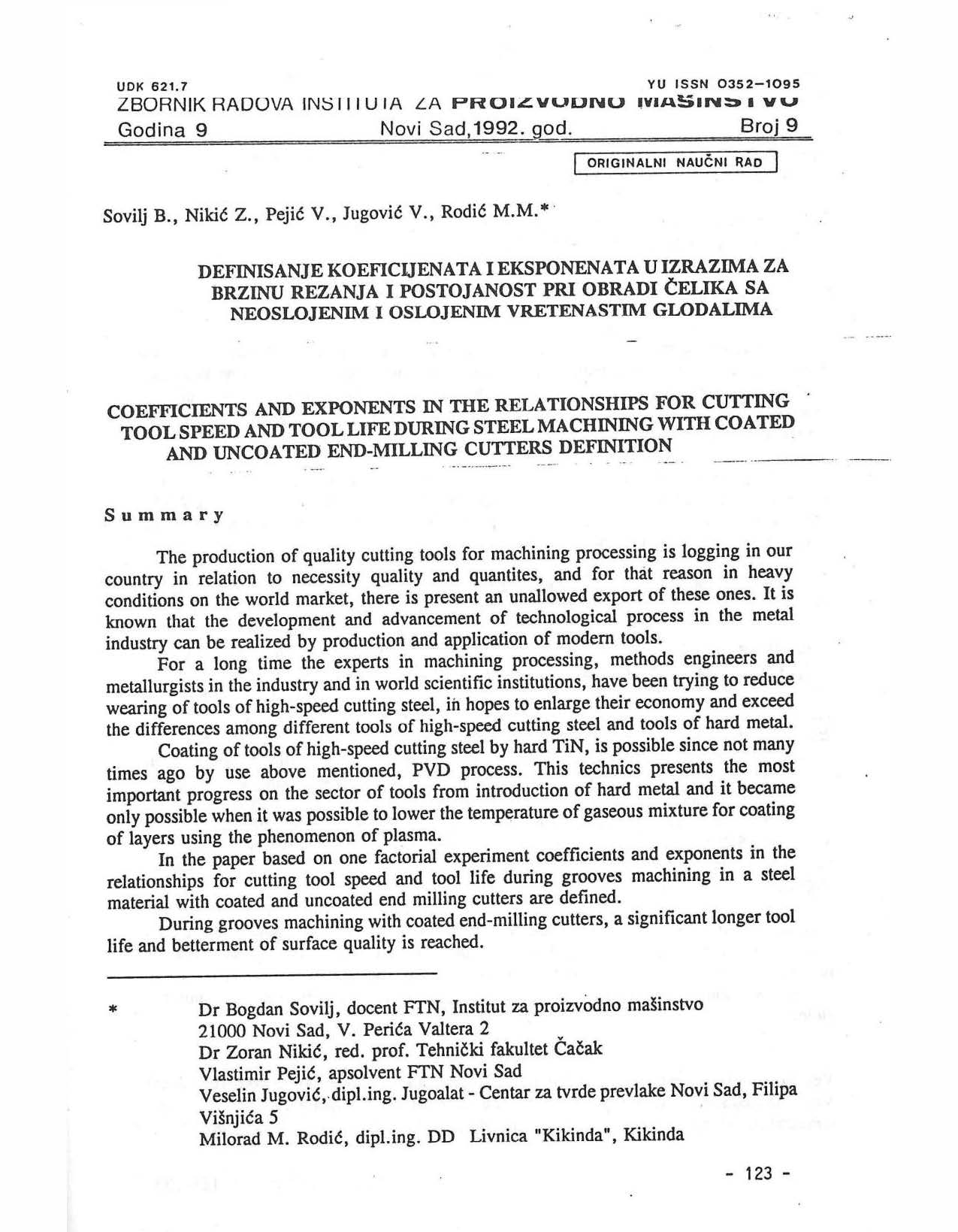Coefficients and exponents in the relationships for cutting tool speed and tool life during steel machining with coated and uncoated end-milling cutters definition

Published 1992-12-01
abstract views: 13 // FULL TEXT ARTICLE (PDF): 9
Keywords
- high-quality cutting tool,
- machining processes,
- advancing technological processe
How to Cite
Copyright (c) 2023 Journal of Production Engineering

This work is licensed under a Creative Commons Attribution 4.0 International License.
Abstract
The production of high-quality cutting tools for machining processes in our country is currently falling behind the growing demand for both quality and quantity, leading to a concerning deficit in exports on the competitive global market. Recognizing the pivotal role of modern tools in advancing technological processes within the metal industry, experts in machining, methods engineers, and metallurgists have long sought ways to reduce wear on high-speed cutting steel tools. The aim is to enhance their cost-efficiency and narrow the performance gap between high-speed cutting steel tools and their hard metal counterparts. Recently, a breakthrough has been achieved through the application of hard TiN coatings to high-speed cutting steel tools using the PVD process, significantly enhancing their capabilities. This technological advancement, made possible by reducing the coating temperature through plasma phenomena, represents a major leap forward in tool manufacturing. In this paper, the coefficients and exponents for cutting tool speed and tool life during groove machining in steel materials, utilizing both coated and uncoated end-milling cutters, are defined through a one-factorial experiment. The results demonstrate a significant extension in tool life and a noticeable improvement in surface quality when employing coated end-milling cutters during groove machining.

